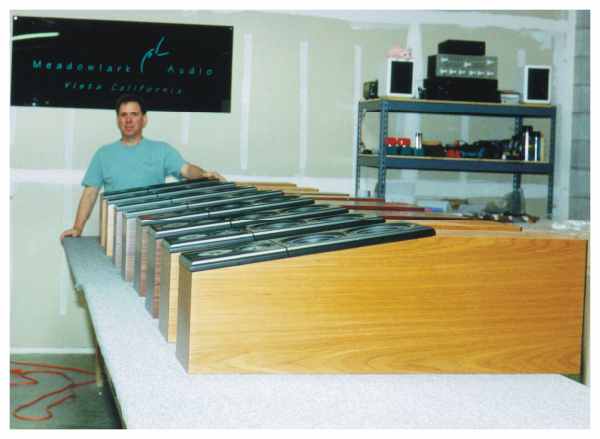|
|
|
|
|
|
|
Pat shows off a few pair of Herons that have just been assembled, and are awaiting quality control. Once a Heron cabinet arrives in the assembly area, it will require about four hours of careful work to be completed. This is entirely a 'hand' operation. All connections are soldered, and each crossover is individually built into the isolated crossover bay at the base of each speaker. Baffleboards are bedded to the main cabinet with a 9 inch wide layer of Keldamp to impede the transfer of vibration between the cabinet and the baffle. Drivers are then seated on a gasket which is also made of Keldamp. Driver mounting screws are carefully torqued to be sure that the Keldamp is compressed by just
|
the right amount. Each Heron is visually inspected by at least two of us, and then subjected to both low and high power testing, using both analog and digital test methods. Many speaker companies skip high power testing because it requires a skilled operator, is pretty darn loud, and reveals the kinds of problems that are likely to go unnoticed anyway. Well, that's not our style. We've found that by running the speakers at maximum output levels we can shake out problem drivers that otherwise would have snuck through. Now, because we buy drivers from the world's best makers, we have very few reject drivers - maybe one or two percent - but most of these are identified during full power testing. We want every single speaker that leaves our shop to be exactly what it is supposed to be. |

